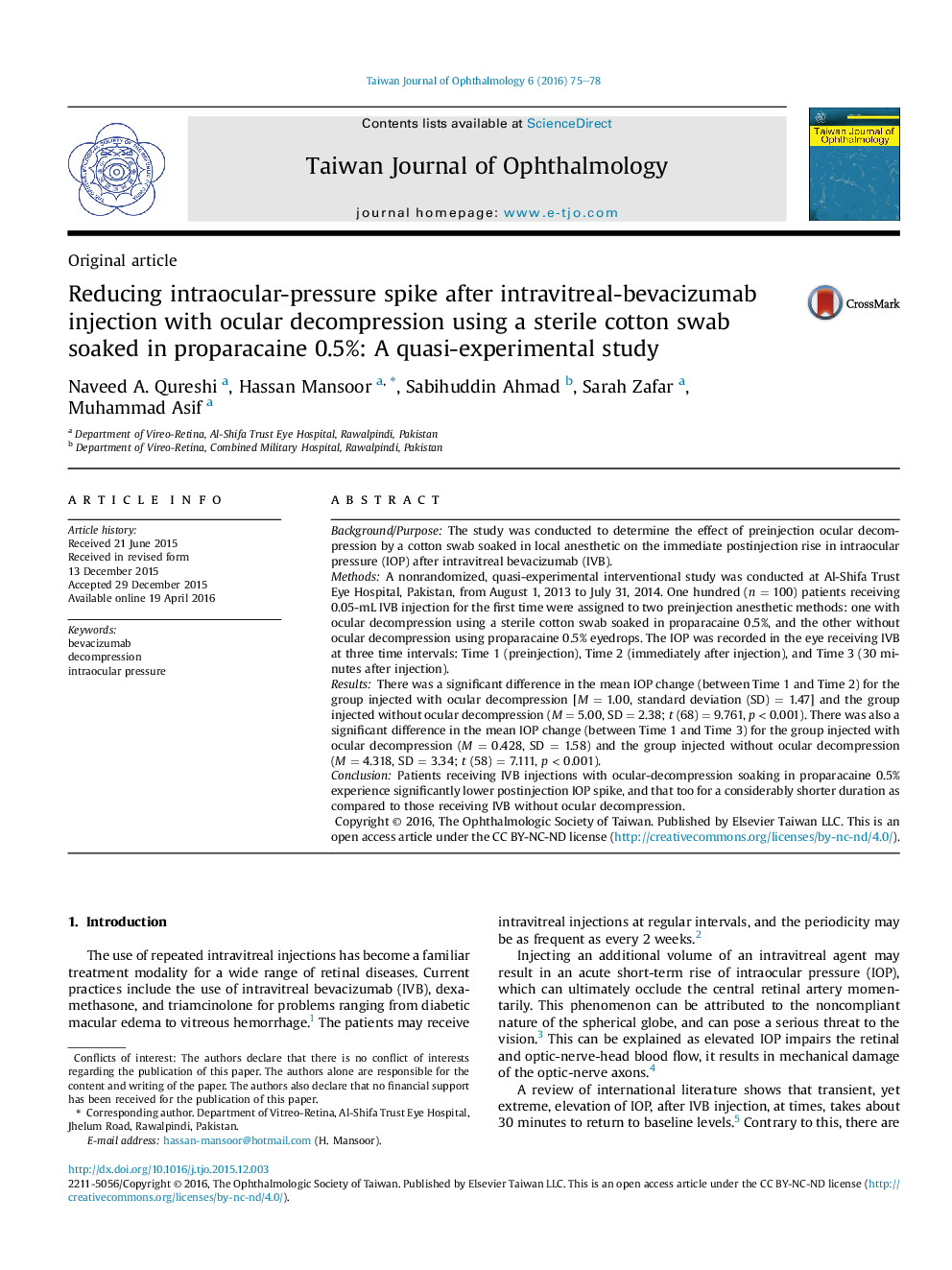| Article ID | Journal | Published Year | Pages | File Type |
|---|---|---|---|---|
| 4033308 | Taiwan Journal of Ophthalmology | 2016 | 4 Pages |
Background/PurposeThe study was conducted to determine the effect of preinjection ocular decompression by a cotton swab soaked in local anesthetic on the immediate postinjection rise in intraocular pressure (IOP) after intravitreal bevacizumab (IVB).MethodsA nonrandomized, quasi-experimental interventional study was conducted at Al-Shifa Trust Eye Hospital, Pakistan, from August 1, 2013 to July 31, 2014. One hundred (n = 100) patients receiving 0.05-mL IVB injection for the first time were assigned to two preinjection anesthetic methods: one with ocular decompression using a sterile cotton swab soaked in proparacaine 0.5%, and the other without ocular decompression using proparacaine 0.5% eyedrops. The IOP was recorded in the eye receiving IVB at three time intervals: Time 1 (preinjection), Time 2 (immediately after injection), and Time 3 (30 minutes after injection).ResultsThere was a significant difference in the mean IOP change (between Time 1 and Time 2) for the group injected with ocular decompression [M = 1.00, standard deviation (SD) = 1.47] and the group injected without ocular decompression (M = 5.00, SD = 2.38; t (68) = 9.761, p < 0.001). There was also a significant difference in the mean IOP change (between Time 1 and Time 3) for the group injected with ocular decompression (M = 0.428, SD = 1.58) and the group injected without ocular decompression (M = 4.318, SD = 3.34; t (58) = 7.111, p < 0.001).ConclusionPatients receiving IVB injections with ocular-decompression soaking in proparacaine 0.5% experience significantly lower postinjection IOP spike, and that too for a considerably shorter duration as compared to those receiving IVB without ocular decompression.
